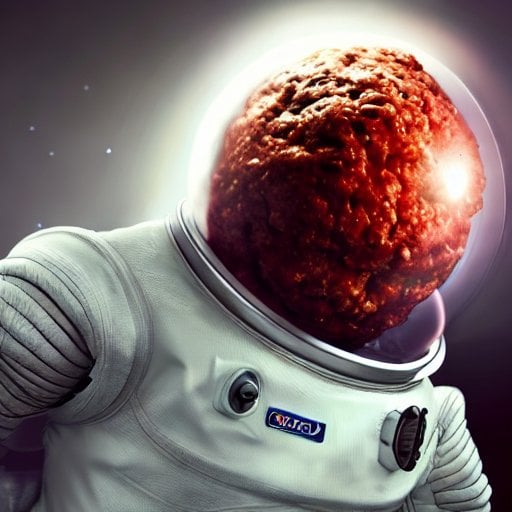Lobsters have urine nozzles under their eyes, and pee in each other’s faces to communicate.
subscribe
Lobsters have olfactory sensory neurons, located in the aesthetasc sensilla on their antennules, which allow them to detect the pheromones in the urine of other lobsters.
A dominant male lobster will pee to signal his dominance and deter other males from his territory. Females may also pee to signal their readiness for mating, and the urine of a dominant male can attract females.
Lobsters also communicate through touch and by using their claws, but no one really gives a fuck after reading about the pee thing.
Tl;dr lobsters have a major piss fetish
Im interested in the claw communication! How does that work?
Also, the pee stuff is hilarious
Mostly as a show of strength and territorial control. Nothing unexpected. It’s not as nuanced as their pheromone communication.
Ah, so just kinda slappin claws.
Is there any other way to communicate? Peeing in someone’s face is a very effective way to send a message.
When a whale dies and its corpse falls to the bottom of the ocean, entire ecosystems rapidly develop around eating every part of it due to how scarce resources are in the deep ocean. This phenomenon is called a “whale fall” and it’s a major source of energy for deep ocean ecosystems.
Sometimes I wonder if a shipping container full of billionaires would have a similar effect.
We have to find out. We need to try it immediately to see what happens. That’s just basic science
That seems like a waste of a perfectly good shipping container.
Why don’t we just use environmentally friendly hemp ropes and locally sourced boulders?
Locally sourcing boulders over the Marianas Trench is going to be such a pain. I’m pretty sure the environmental benefits will outweigh importing some nice basalt from Hawaii before we leave out.
Or a submarine.
There are lakes in the ocean called brine lakes/pools. Brine is essentially concentrated saltwater; its high salinity means it’s denser than water. On rare occasions, brine doesn’t mix enough with the existing saltwater around it, sinking to the bottom of the ocean and forming these lakes. The lake itself is usually devoid of life; brine itself is so salty that animals go into toxic shock if exposed for too long. However, the edges usually are full of life, where usually things like mussels and other extremophile organisms thrive.
Side note, subnautica’s lost river is based off of this. No big leviathans in real life though, at least none observed yet…
Video for fun: https://youtu.be/ZwuVpNYrKPY
Similarly, SpongeBobs Goo Lagoon is a brine pool.
It was never stated but I always assumed the “goo” referred to industrial waste. But SpongeBob creator Steve Hillenburg was an actual marine biologist and would have been well aware of brine pools, so that’s probably right.
Brine can be from industrial waste
Technically, brine just means a high concentration of salt in a fluid. It doesn’t necessarily have to be sodium chloride like we know, it can be other salts, like calcium chloride. Though the most common case for industrial brine is just desalination plants, other industries can still create brine, like mining/oil drilling. It also depends on how it’s released. Large amounts dumped at once is the reason for manmade brine pools.
It’s the explanation for the beach Spongebob visits too
Amazing
Wow, I had no idea these were a thing… and it’s so funky how the surface of the brine pool interacts with the surrounding seawater!
Greenland sharks are pretty amazing
They can grow up to 24 feet putting them at the same giant scale as great whites and basking sharks, but most are usually closer to 5 meters long
They can live for hundreds of years due to extremely slow metabolism and ambush feeding, some individuals found around 400 years old are as old as the Jamestown colony, Don Quixote, and the discovery of logarithms.
They are opportunistic feeders and have been found with polar bear and reindeer in their digestive systems, and can pull/vacuum in water to catch their primary prey of fish, eels, and other sharks.
24 feet ~ 7.3m
5m ~ 16’5”
deleted by creator
Back to the horrors of the deep…
They also commonly have eye parasites that severely impairs their vision or blinds them called Ommatokoita elongata.
So they get to live long with multiple generations of parasites stuck in their eyes they can’t get out.
Be me
young shark, ready to make my mark on the world
Find a book falling from the sky called Don Quixote
eh_mid.jpg
Ignore humans for a few hundred years, eat some fish instead
Find out it’s become a core component of their identity and everyone knows about it
Even had a ballet about it
wtf
Don Quixote is actually an awesome book, you should definitely read or listen to it. Give it a bit to get rolling, and you will absolutely be doubled over with laughter
So 5 meter long sharks with 24 feet? That sounds terrifying. How far up the beach can they run?
feet … meters
Oh, please.
Are they the ones where you have to ferment the flesh or it is toxic? Or wasn’t that a shark?
fun fact: we kill 3 TRILLION animals a year, most of which are sea animals.
fun fact: animals, exluding humans, kill about 1 MILLION of us humans a year, most of which are not sea animals.
Fun Fact: I found the hunter
Isn’t like more than half that number diseases like malaria spread through mosquitoes
Yeah, the numbers are different everywhere, but mosquitoes cause at least 50% of that million.
Next fun fact: Its more likely to get killed by a coconut dropping onto your head than to die in a shark attack.
Does it include bugs? I can’t imagine we kill more fish than bugs
Shrimp, lobsters, and crabs are kinds of bugs.
Arthropods, not bugs.
Does “bugs” have a scientific meaning? I was assuming it was a layman’s term that I could abuse.
An “insect” or “bug” is an arthropod with six legs in the class Insecta. There’s also “true bugs” which are in the order Hemiptera (or even just the suborder Heteroptera if you are super nitpicky) - this includes things like leafhoppers, aphids, assassin bugs…
Within Insecta, we have Hemiptera, Hymenoptera (ants, bees, wasps), Coleoptera (beetles), Lepidoptera (butterflies, moths) and Odanata (dragonflies, damselflies).
To get to crabs, lobsters, and shrimp, you have to zoom out to jointed exoskeletons - Arthropods. (And I think crabs are a clusterfuck that make cladists cry, I’m in a landlocked state and haven’t got to do much ocean science myself so won’t put my foot in my mouth there.)
Other things that are “not bugs” but often called such - spiders, scorpions, whip scorpions and vinegaroons are all Arachnids (arthropods with specialized limbs called chalicerae - those cool things at the front of a spiders mouth), Rollie pollies/pill bugs are Isopods. Centipedes and millipedes are Myriapods.
Your larger point about how it’s weird that people get grossed out by the idea of eating mealworms but are okay with chowing down on shrimp is a good one though.
weird how people will eat lobsters and crabs, but won’t eat grasshoppers and ants.
Not sure what your definition of people is, but Mexicans, Ugandan, and Koreans all eat grasshoppers (and probably others). I know crickets are eaten in Southeast Asia.
Ants seem too tiny to try to eat, but a Google search reveals they are eaten in South America and Southeast Asia.
Not a fact but a question:
How do whales keep water out of their anuses when they are deep diving?
Whales have been known to dive almost 2 miles deep and at that depth you’re looking at almost 300 atmospheres of pressure and a whale’s sphincter has to be strong enough to resist that.
I had to look it up out of curiosity. The rib cage and lungs of sperm whales are adapted to collapse under pressure, squeezing all the air in the lungs into a small space and increasing internal cavity pressure.
I think that also happens to humans, but without being adapted to it, it’s a one way squeeze.
Like a tube of toothpaste
Not as minty
Depends what you eat.
Wait, why didn’t they get the bends?
They know to ascend slowly to avoid it, but it can absolutely happen.
https://www.whoi.edu/press-room/news-release/how-do-marine-mammals-avoid-getting-the-bends/
Ty!
They can if they do too many dives in rapid succession.
You get the bends by having a lot of nitrogen dissolved on your bloodstream due to the pressure. So it’s a function of how much nitrogen you breathe, how much pressure you’re breathing it at, and the total amount of blood (and some other tissues) in your body that can absorb that nitrogen. Divers get the bends because they are taking multiple breaths of air under pressure, there is multiple lung volumes of nitrogen cycling though the diver. Whales and other diving animals don’t typically “hold” their breath when they dive, but if they did, it would only be 1 breath of air for the entire dive. Air in the lungs is bouyancy they don’t want and can potentially injure them when it re-expands. Most marine diving animals will saturate their blood and muscles with oxygen at the surface and then dive and exhale.
They don’t. That’s their kink.
Same.
Norwegian fjords are freaking deep. When you’re on the shore of Sognefjord, you’re standing in front of a 1300m deep canyon filled with ocean water.
New anxiety unlocked.
Fun Fact: Dolphins fart.
I mean everything farts, right? What about a snail?
It’s a delicacy in France. Escargot de poopoo
tube worms don’t have digestive systems of their own. it is possible they don’t fart. The bacteria they symbiose with might fart on their behalf though.
There are many tube worms that do have digestive tracts, but I assume you are talking about chemosymbiotic tube worms that are found in methane seeps and hydrothermal vents. These guys essentially live in farts (hydrogen sulfide, methane), which their symbionts use for chemosynthesis.
And so do fish.
Sharks are older than trees and the north star.
And Saturn’s rings!
And some living sharks are more than 200 years old, probably.
The perfect killing machine
Thalassaphobia is a real thing
I, for one, think it’s completely fucking reasonable to afraid of deep, dark water. Phobia my ass.
Some phobias are irrational but that’s not part of the meaning of the word
… And there’s a community for it
Whales suffocate to death; they don’t drown.
Human breathing is controlled by the autonomic nervous system. We have to hold our breath on purpose to stop ourselves from automatically breathing. This makes us passive breathers. Whales, however, are active breathers. They must choose to inhale which is why they can sleep without sucking in air. When they get too old, sick, or weak to surface, they suffocate.
Bonus fact: whales can’t breathe through their mouths; it goes straight to the stomach. The blowhole is the only respiratory tract.
Bonus bonus: a blue whale’s throat is so small it could choke to death on a grapefruit.
Bonus bonus: a blue whale’s throat is so small it could choke to death on a grapefruit.
I’m sure their throat can be blocked that way; but if they can’t breathe through their mouth anyway, is it actually choking? Or just terminally blocked?
Fair point. I didn’t even consider the ramifications of wording it like that instead of just saying it has a small throat. I tend to use analogies a lot
Nah, it makes sense, and ice heard this phrasing before - just always wondered if they meant the poor whale couldn’t breathe, or basically just had indigestion!
4" / 10cm throat
goes to moon
Sea of Tranquility
Nooooooo!
A teaspoon of seawater typically contains about fifty million viruses
Metal nodules on the ocean floor produce oxygen
Octopus Lady is 100% crazy ocean creature facts. Also on Nebula.












